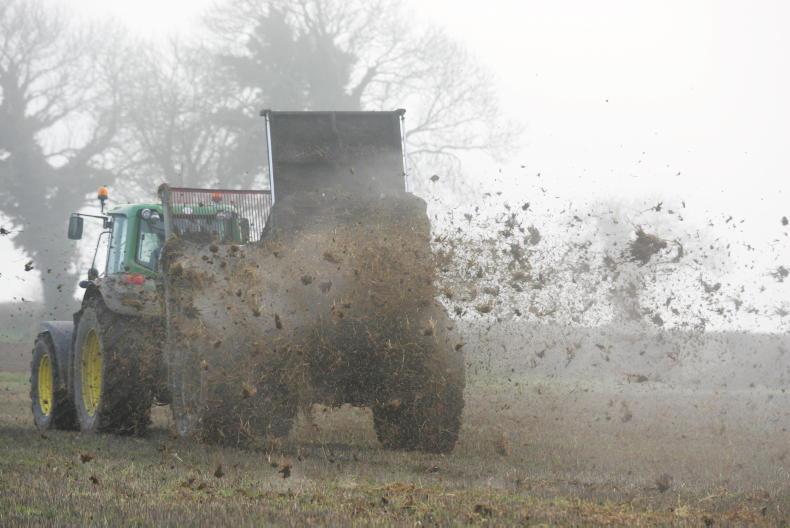Weather
Conditions are still excellent for fieldwork. Frost in recent days and into next week will hamper some jobs. Spraying should be avoided, especially plant growth regulators on frosty nights.
Temperatures are to freeze at night over the course of next week. There’s an odd shower in the forecast so far, but it looks like it will remain largely dry and no doubt people will make use of the dry conditions.
Beans continue to be planted, and if you are still making up your mind on planting the crop remember that you can plant all through the month of March. The crop will save a lot of money, as nitrogen is not needed and income will also come from the protein payment.
Buffer zones
Take a look at the tillage pages on 38-39 for rules on buffer zones. When planting crops you need to leave a 3m uncultivated buffer beside a watercourse and fertilisers or pesticides are not allowed in this area.
Check your maps and think how long a drain holds water for during the year. If it’s dry for the majority of the year it is most likely not a watercourse, but check it with your maps.
Planting
It’s hard to pass up the dry weather while it’s there, and there are some spring barley crops gone into the ground. Oats are an ideal crop to get in early.
Cold temperatures lie ahead in the coming days so growth will be slow.
Many growers will hold off until further into March while the weather allows, but get seed onto farm and fertiliser where it has been bought. As fertiliser markets remain uncertain, it is probably a case of buying when needed if you haven’t purchased already.
Crows are a big problem at the minute for many. Get frighteners out and ensure beans are rolled to make it more difficult for them to dig down.
Thousand grain weight (TGW) will affect your seed rate, but Teagasc generally recommends aiming for a target plant population of 280 plants/m2 up to the middle of March at an establishment rate of 85%. At a TGW of 50 that’s a seed rate of about 165kg/ha.
Varieties
You should choose varieties that are suited to your system. For example, if you didn’t get many winter crops in and will have a lot of spring crops this season then you may need to choose varieties that will ripen at different times to spread out the workload during the year and at harvest time.
Looking at the Department’s recommended lists, the varieties are all rated at scores of 5 and 6 for earliness of ripening. Straw strength is another important characteristic where harvest might be delayed.
Gangway has the highest rating for resistance to straw breakdown on the list with a score of 7.
With all the risks of blackgrass and other weeds, using certified seed can give you confidence that your seed is free of weeds.
While seed has gone up in cost this year it is important that you know what you are planting and guaranteed purity and germination is essential.










SHARING OPTIONS